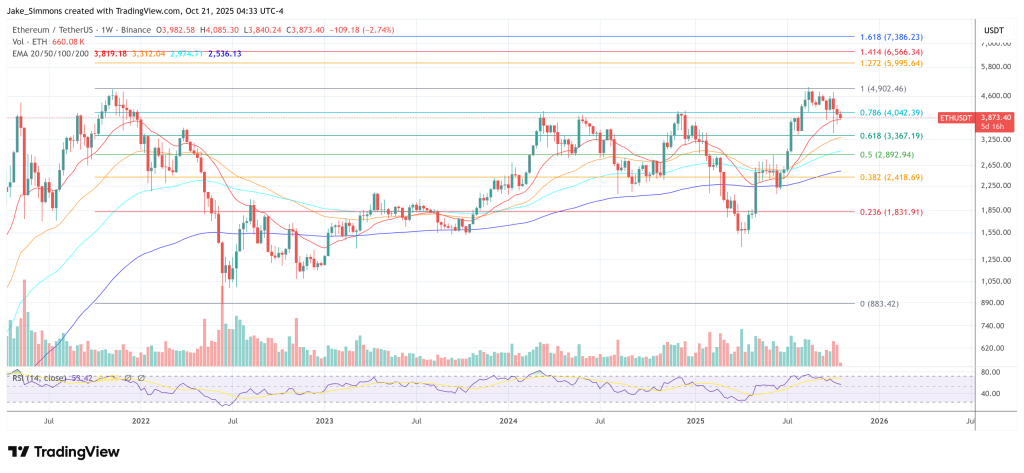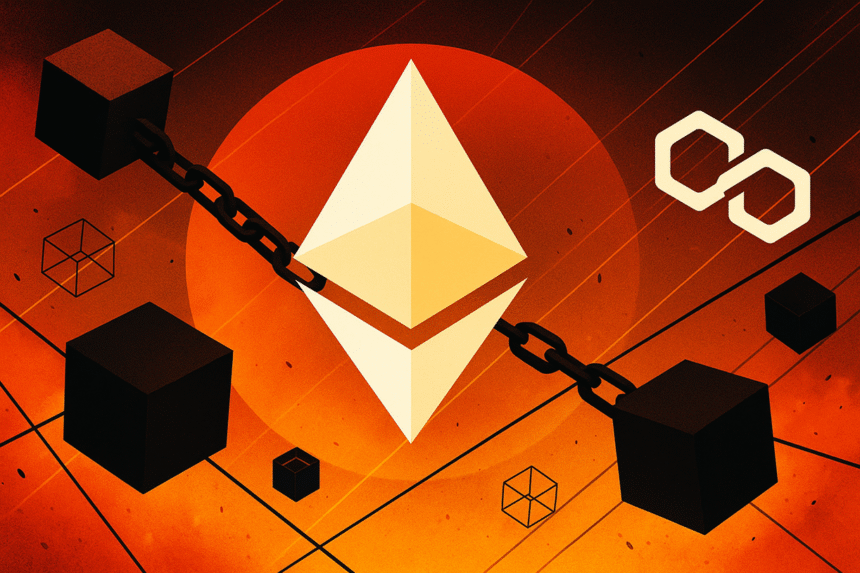
Polygon Foundation CEO Sandeep Nailwal publicly questioned his “loyalty to Ethereum,” sparking a rare and raw soul-searching effort across the ecosystem and eliciting immediate reactions from core contributors, investors, and ultimately Vitalik Buterin himself. The exchange, which has unfolded on X over the past 10 hours, focuses on whether the Ethereum Foundation (EF) adequately supports its builders, how Layer 2 projects are perceived within the Ethereum narrative and market “beta,” and whether the community’s culture has deviated from its original ideals.
Is the Ethereum Foundation a “shit show”?
“After reading Peter’s article, I knew it was time for me to speak out,” Nailwal wrote, referring to core developer Peter Siraj’s decision on October 19 to publish a letter he allegedly sent to EF executives about 18 months ago. Nailwal, who considers Ethereum and Buterin to be his entry point and inspiration, says his long-standing moral loyalty to Ethereum has come at a personal and corporate cost: “I and we have never had direct support from the EF or Ethereum CT community, in fact the opposite is true. But I have always felt a moral loyalty to Ethereum, even if it cost Polygon billions of dollars in valuation.”
Nailwal’s criticism is both cultural and economic. “The entire Ethereum community has been a shit show for quite some time,” he wrote, adding that repeated public crises have forced key contributors to “question what we’re doing here.” He said his friends, including AkshayBD (Chief Marketing Officer of the Solana Foundation and co-founder of SuperteamDAO), urged him to declare Polygon L1 and “walk away from this circus”, claiming that despite its contributions, the community’s “socialist behavior” is trolling Polygon “because of some arbitrary ‘technical definition'”.
He argued that the market structure punished Polygon for rejecting the L1 label, saying, “It is widely believed that if Polygon decided to call itself L1, it would probably be valued two to five times more than it is today,” pointing to a comparison that is now widely debated. “If you think about it, L1’s Hedera Hashgraph is rated higher than Polygon, Arbitrum, Optimism, and Scroll combined.”
Nailwal says this classification debate has real-world implications for recognition and indexing. “While Polygon’s PoS is effectively dependent on Ethereum, Katana, XLayer, and dozens of other chains in the Polygon ecosystem are true L2,” he said, while asserting that “the Ethereum community has ensured that Polygon will never be considered L2 and will never be part of the market-perceived Ethereum beta.” He added that he was scolded by “prominent Polygon people” because “Polygon is not available on GrowthPie, which refuses to list the Polygon chain,” and contrasted it with how Polymarket’s success is being attributed to “Ethereum,” even though “Polygon itself is not Ethereum. That’s mind-boggling.”
Despite the frustration, Nailwal said he would try once again to recalibrate the technical and social consensus around scaling, saying, “We’re going to make one final push that could potentially revive the whole L2 story. Just hang in there for a few more weeks.” “Ethereum is a democracy. In any democracy, people from all walks of life will eventually be dissatisfied. But it is still the only system that truly works in the long run.”
The thread quickly garnered responses from prominent builders. Andre Cronje, who spent “over 700 ETH on deployment and ETH infrastructure” during his Ethereum days, directly questioned EF’s support priorities. “I contacted EF and got no response. No lobbying for BD, no grants. Zero support, not even retweets,” Cronje wrote. Comparing his experience to Fantom’s Sonic ecosystem, he said he was “disconcerted” to see the team there receiving BD support, subsidies, TVL, audits and marketing, and asked, “If it’s not the core builders Peter and geth, and it’s not the most vocal L2 supporters (Sandeep and Polygon), then where does it go?”
Tommy Shaughnessy of Delphi Ventures saw this problem as undercompensating irreplaceable talent. “The Ethereum Foundation should pay developers like professional athletes. (…) The Ethereum Foundation is basically paying people to quit. Top developers should be paid like professional athletes.”
Vitalik Buterin’s reaction
Hours later, Buterin offered an unusually personal thank you to both Nailwal and Polygon for their contributions, and also offered technical future directions. “We are truly grateful to both @sandeepnailwal for his personal contribution and @0xPolygon for his invaluable role in the Ethereum ecosystem,” he wrote, as well as Polygon’s role in hosting Polymarket, an early resource-intensive bet on ZK-EVM proofs (“Jordi Baylina’s team’s introduction”), and AggLayer. I checked the infrastructure for proof aggregation via , and support for “applications” by name. A high level of scalability was required. ”
Regarding the core technical question of whether Polygon can and should strengthen its security guarantees with modern zero-knowledge proofs, Buterin argued that the market is evolving towards a separation of concerns between L2 operators and ZK proof experts.
“It’s very difficult to be both the best L2 team and the best ZK team. Those are two completely different skill sets,” he said, citing standalone ZK providers and urging Polygon to “take the off-the-shelf ZK technology, which is now very good, and apply it to the PoS chain to get full Stage 1 and subsequent Stage 2 guarantees from Ethereum L1.”
He emphasized how much the economics have advanced, saying that “the cost of proof is about $0.0001 per tx,” and regarding the idea that ZK is not viable at hyperscale, he said that many L2 teams are “very surprised when we give you recent numbers… Live projects like the latest ZK-EVM and @Lighter_xyz show this to be false.”
At the time of writing, ETH was trading at $3,873.

Featured image created with DALL.E, chart on TradingView.com

editing process for is focused on providing thoroughly researched, accurate, and unbiased content. We adhere to strict sourcing standards, and each page is carefully reviewed by our team of top technology experts and experienced editors. This process ensures the integrity, relevance, and value of your content to your readers.


